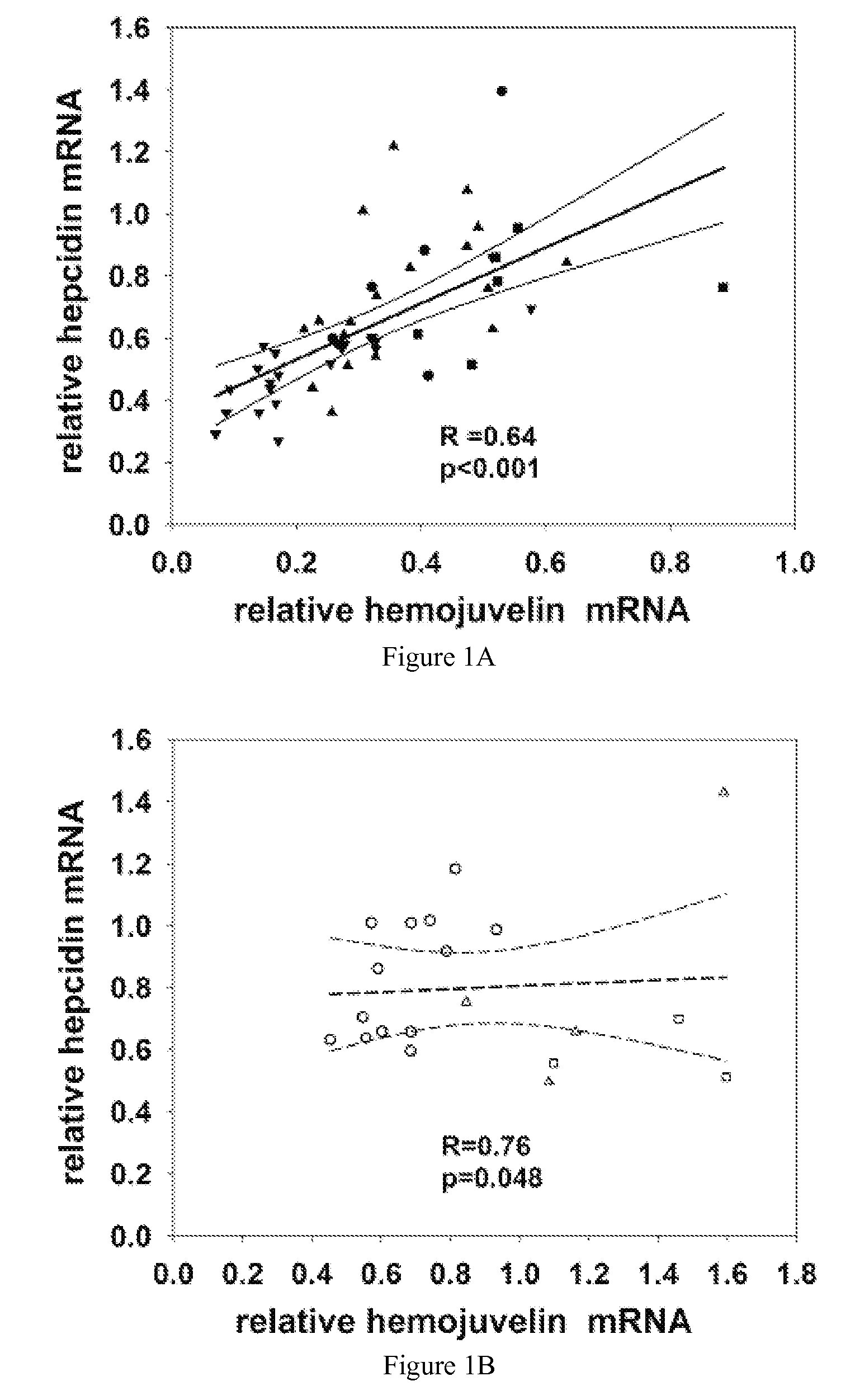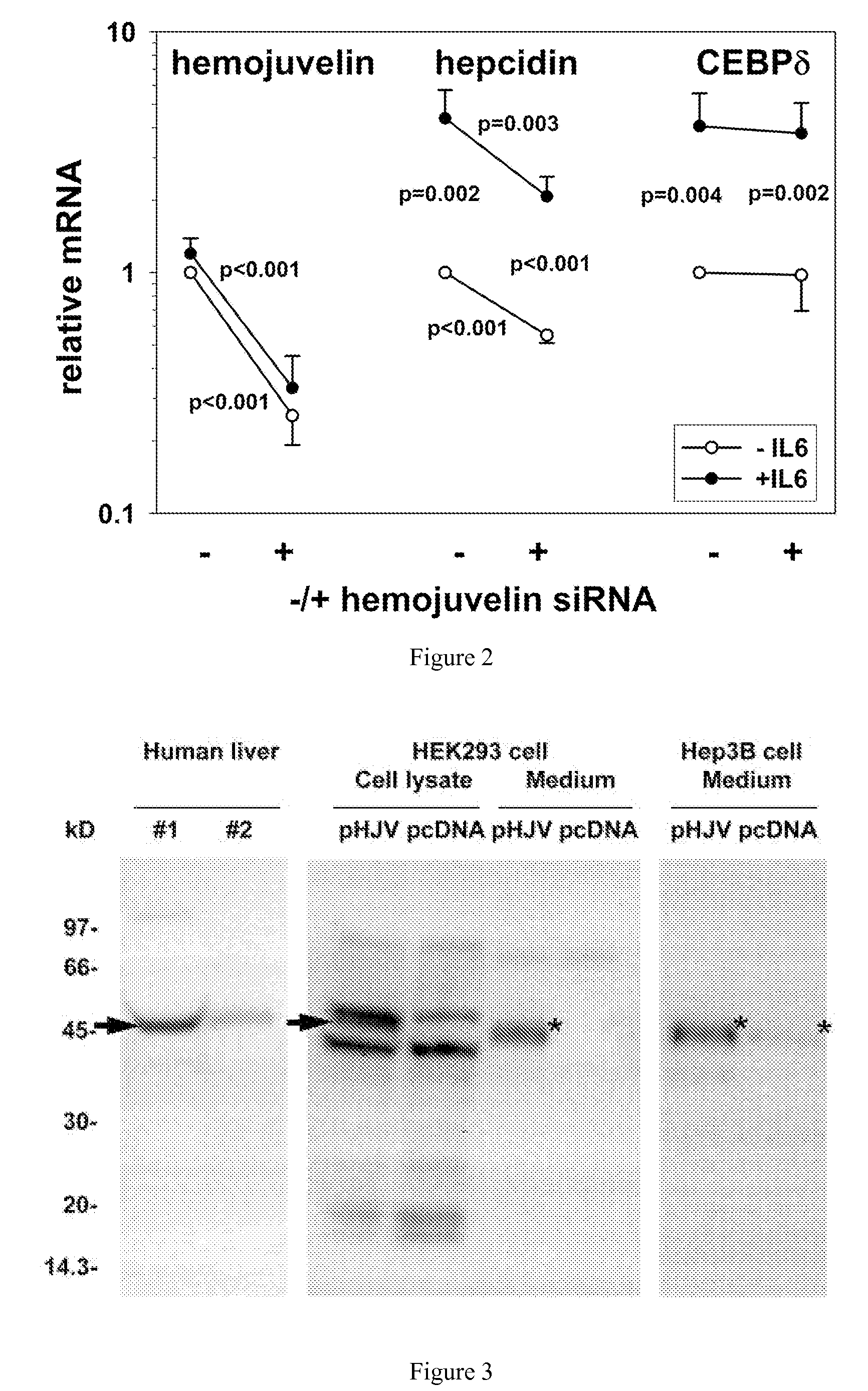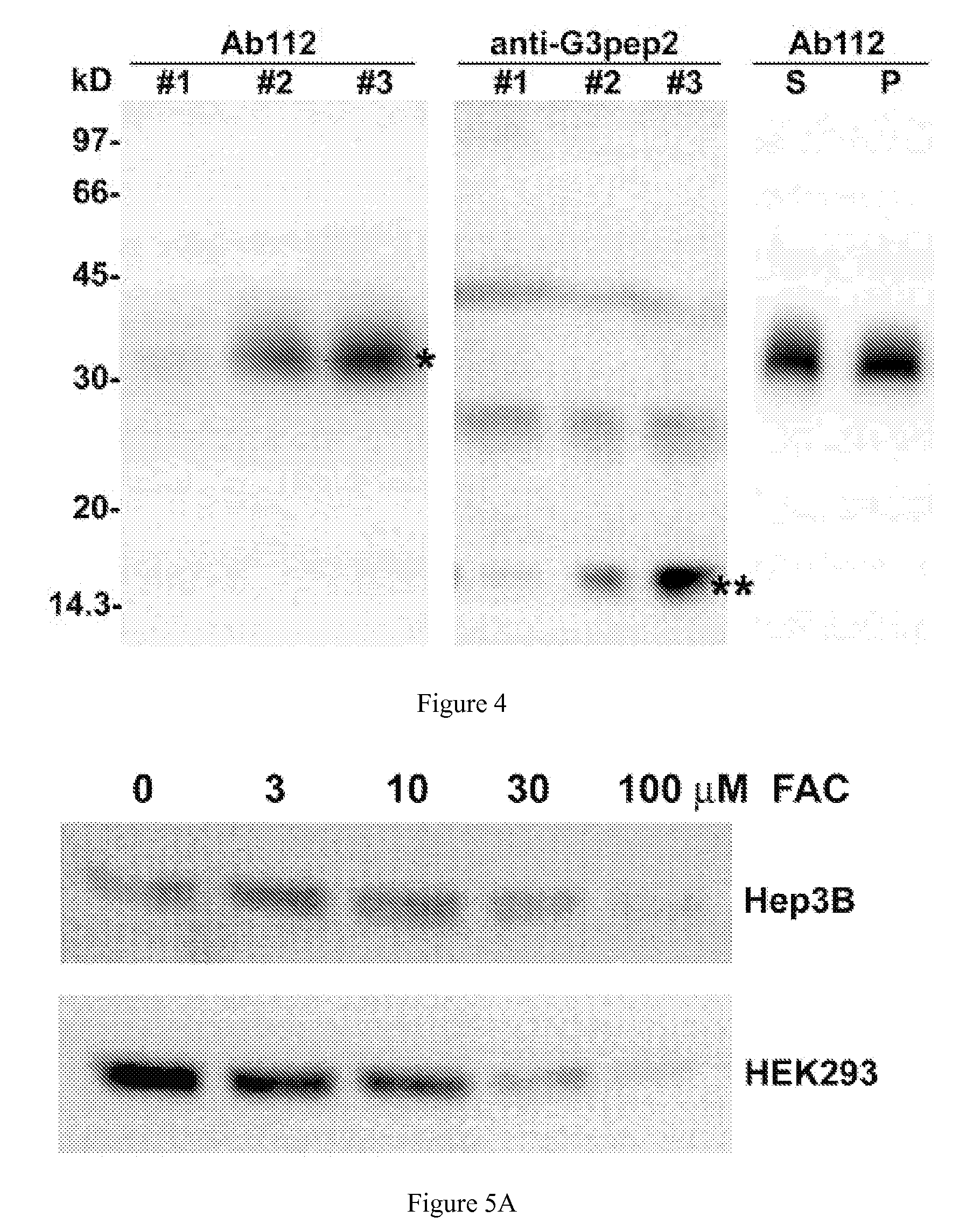Competitive Regulation of Hepcidin mRNA by Soluble and Cell-Associated Hemojuvelin
a technology of hepcidin and hemojuvelin, which is applied in the field of disease of iron metabolism, hepcidin and hemojuvelin, can solve the problems of reducing unable to identify suitable therapeutics, and unable to achieve therapeutic effects, so as to reduce the production of red blood cells, and reduce the production of hepcidin.
- Summary
- Abstract
- Description
- Claims
- Application Information
AI Technical Summary
Benefits of technology
Problems solved by technology
Method used
Image
Examples
Embodiment Construction
[0045] As provided herein, the expression and regulatory roles of GPI-hemojuvelin and soluble forms of hemojuvelin (s-hemojuvelin) were studied and it was found that, in extracellular iron homeostasis, GPI-hemojuvelin and s-hemojuvelin act as opposing regulators of hepcidin. Therefore, the present invention provides compositions and methods for regulating or modulating hepcidin.
[0046] The hemojuvelin (HJV) gene produces multiple alternatively spliced mRNA isoforms. The longest isoform of hemojuvelin mRNA encodes a 426 amino acid protein, which contains a C-terminal putative transmembrane domain characteristic of a glycosylphosphatidylinositol-linked membrane anchor (GPI-anchor). See Niederkofler, V. et al. (2004) J. Neurosci. 24:808-818; and Monnier, P.P., et al. (2002) Nature 419:392-395.
[0047] The genetic linkage between juvenile hemochromatosis due to HJV mutations and nearly absent hepcidin excretion in the affected individuals left open the possibility that hemojuvelin, like ...
PUM
| Property | Measurement | Unit |
|---|---|---|
| concentration | aaaaa | aaaaa |
| pH | aaaaa | aaaaa |
| concentrations | aaaaa | aaaaa |
Abstract
Description
Claims
Application Information
 Login to View More
Login to View More - R&D
- Intellectual Property
- Life Sciences
- Materials
- Tech Scout
- Unparalleled Data Quality
- Higher Quality Content
- 60% Fewer Hallucinations
Browse by: Latest US Patents, China's latest patents, Technical Efficacy Thesaurus, Application Domain, Technology Topic, Popular Technical Reports.
© 2025 PatSnap. All rights reserved.Legal|Privacy policy|Modern Slavery Act Transparency Statement|Sitemap|About US| Contact US: help@patsnap.com



